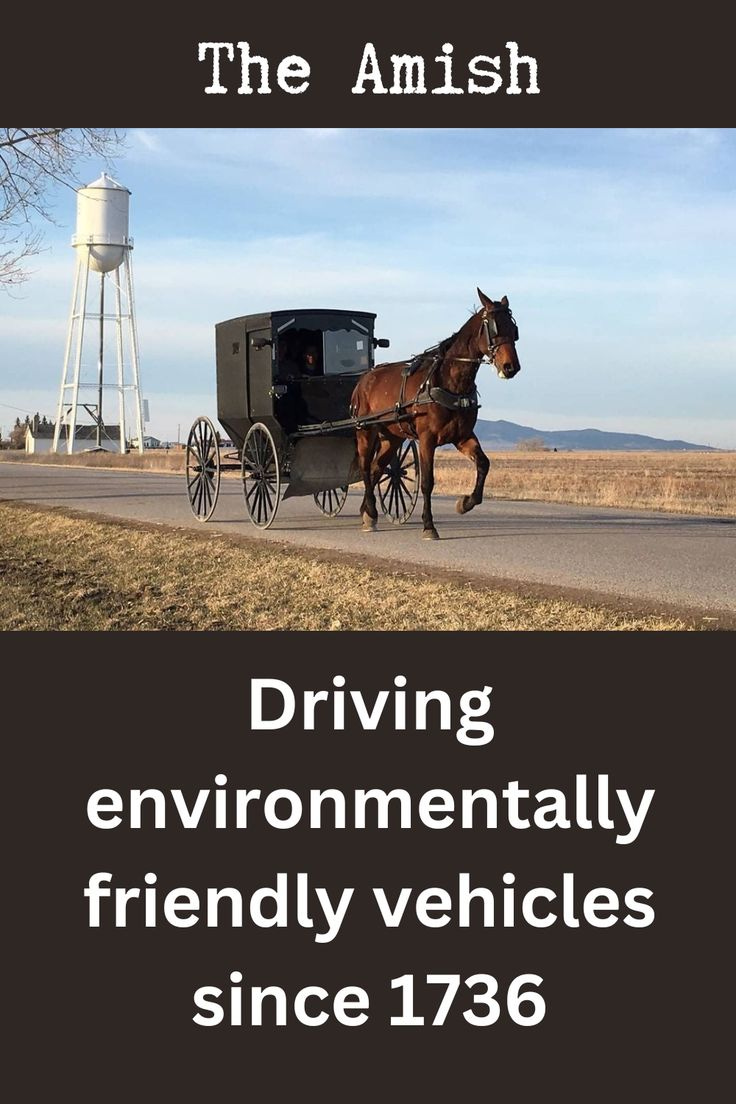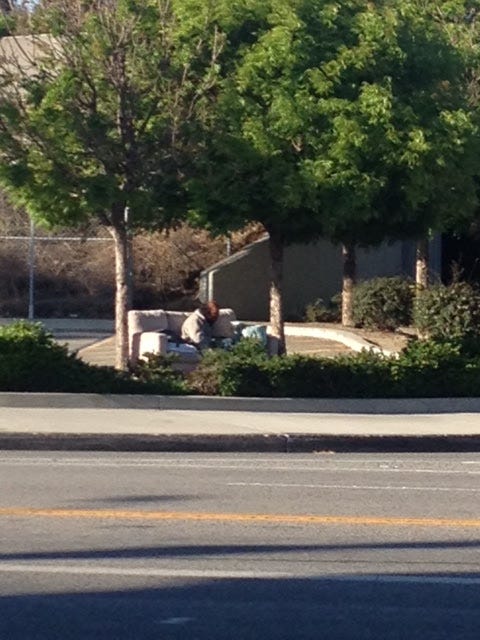Recession 101- #3- Finding the lifestyle that will get you through this recession
Americans have a reputation for spending money we don't have and living way beyond our means. Recessions punish people living to far beyond their means...
Feed that horse oats and hay, let it graze on grass, and get fertilizer from the “tailpipe.” Laugh if you want, but your electric vehicle in the United States is powered mostly by natural gas, coal, nuclear, and hydroelectric dams. Most of our electricity still comes from fossil fuels. In some cases, you might also be funding White supremacy with every car payment on your EV. Suddenly a horse and buggy seems kinds of smart, doesn’t it? Guess who doesn’t worry about surviving a gnarly recession? Amish people. #steveemigmemes
During economic hard times, like financial recessions and market crashes, debt often becomes a big anchor that drags millions of people down. Life savings and retirement accounts that took decades to acquire can disappear in a matter of days. Millions of dollars of “wealth” can disappear in seconds in today’s hyper-connected, day trading stock, commodity, and bond markets. Billions of dollars can disappear in hours. Trillions of dollars can disappear in days. This spring, as a new presidential administration took over the United States, over $5 trillion simply evaporated from investment accounts in a couple of months. As I write this in early May, the stock and crypto markets have rebounded some, but the economic troubles worldwide are far from over.
We have all heard about the sensible way to live within our budget, at some point in our lives. Grandpa might have told you about it, or maybe it was your weird uncle who always talks about buying gold, or maybe it was your mom’s cousin, the rich but weird cat lady, who told you about it.
The idea goes something like this. Live on 80% of your income, pay all your bills in cash, without using all of your paycheck. If you can’t afford it, do without it. Save 10% of your income, first in a savings account, then to invest for your retirement. Give the other 10% to charity, either as a religious tithe, or just to show you have faith in your ability to keep earning money, even in hard times. Don’t buy anything, except your home, on credit. Pay cash for everything. Cut up any credit cards, close any payment apps, and pay off any loans you have, except for a home mortgage, if you’re lucky enough (?) to have one. Buy only a used cars, a few years old, and pay for them with cash. Maybe you should even start a garden in the back yard, if you have one. How does that sound to you?
I know, to most people, that kind of life sounds terrible. I mean, everybody buys almost everything with payments these days, right? We don’t even use actual cash, as in paper money and coins, most of the time. We buy stuff with invisible digital money these days, 1’s and O’s of digital code, transferred from our phones or debit cards to the electronic machine once called a cash register. It’s the 2020’s after all, who needs actual cash money? OK, a lot of people could really use more money, cash or digital, right now. Times are tight for most people. That’s my whole point in this post.
If you “lived sensibly,” as described in the paragraph above, a recession wouldn’t be that big of a deal to you. You would have several thousand dollars in the bank, some in savings, and more in low interest, but safe, investments, for your eventual retirement. That money, and your simple, cheap lifestyle, would buy you time, even if you got laid off from your job. This kind of lifestyle, called conservative (small “c”) way back when I was a kid, makes sense when times get tough. Times always get tough, sooner or later. Financial recessions and depressions, like the economic downturn we’re heading into now, are when a simple and responsible life save people from all kinds of unnecessary drama.
Homeless man hanging out on a discarded couch. San Fernando Valley, California, during the pandemic, in 2022. As a longtime homeless person myself, though a sober and creatively prolific one, I’ve learned that most of the homeless people once had decent jobs and regular homes. Financial downturns, like the Great Recession of 2008, hit lots of working people really hard. In addition, personal crises, like huge medical bills, losing jobs, or maybe a bad divorce, along with the lack of a strong family or social network, led to homelessness for thousands of today’s large homeless population in the United States. #steveemigphotos
We live in a world where many pop and rap videos are full blown commercials for luxury items that nobody really needs. These videos, and some TV shows, promote a lifestyle that almost no one can afford to live. Rap stars stand next to rented Lamborghinis and Rolls Royce, suicide door cars, sip from $30 bottles of the latest trendy vodka or tequila, while wearing a $10,000 watch, and listening to music on a cool Bluetooth speaker. “Look at me, be a playa like me, flex lots of bling like me,” screams every pop and rap video. With the blatant product placement in so many places these days, it’s hard to tell where music videos end and where corporate advertising begins.
Why do major corporations pay these rappers and pop stars thousands of dollars to feature their products in their videos? Because it works, product placement sells shit. Did you know that 27% of luxury items worldwide are bought by Americans with incomes of less than $50,000 per year? Yep… it’s true. Poor people by a lot of expensive stuff, to try and act like the queens and playas they see in music videos.
Product placement is nothing new, here’s a video with rap and hip hop pioneer, Fab Five Freddy, wearing Vision Street Wear clothes on Yo! MTV Raps, while interviewing NWA, in 1990. Yep, promoting products in music videos goes back to the early days, when I was still working for Vision Street Wear’s video company. Skateboarders and BMXers helped build the brand, before musicians and rappers got free clothes to promote Vision Street Wear.
With all that rap and pop music video hype for the trendiest brands of everything, combined with everyone pretty much everyone totally fronting on Instagram, it’s easy for people to get caught up in trying to appear far wealthier than they really are. How do people do that? On credit. Paying for things with money they don’t have. Millions of people borrow billions of dollars to impress people they don’t really like. Ah… consumerism. In a growing economy, that can work… for a while.
Let’s bring this back around. On one side of the coin, there are still people who live almost entirely without borrowing money. Not just just ultra frugal groups like the Amish and Mennonites, but a small number of people who were brought up that way. They are the least likely working class to get wiped out by a recession. On the other side of the coin is that alter ego you have, the secret you that wants to live like the people in rap and pop videos pretend to live. The quarter million dollar cars, the champagne, top shelf liquor, cigars, watches, and the pimpin’ crib. All bought with debt, because you sure as hell can’t afford that lifestyle.
In the real world, we all have to find some place in between those two extremes. Somewhere between the lifestyle that you think people like 50 Cent, Lady Gaga, and Young Thug live, and the Amish people living simply on farms in the Midwest, is the lifestyle that you live now.
The reality today is that nearly everyone has more debt than they can handle right now. In tough times, when business slows down and thousands of people get laid off, most people have to dial back their lifestyles. That means that, for most of you, somewhere between the lifestyle you’re living now, and those Amish folk in Ohio, is the lifestyle that will get you through the next few tough years. Almost everyone is going to have to dial it back in 2025, 2026, and maybe longer. Yes, that comes across as a buzz kill. But that is just the reality of economic recessions.
In many ways, this gets people to back off from the illusion of success, and find the things in life that actually make you want to get up and work every morning. A Roll Royce, a bottle of Patron, gold chains, and Cuban cigars are not what make most people happy in real life. Recessions make a lot of people ask, “What really makes me happy? What really makes me wake up excited for the day?” A lot of good can come from asking those questions.
I know this sounds horrible, especially to the Millennials and Gen Z people, since most of you haven’t lived through a recession as adults. But yes, most people, probably including you, will have to learn to spend less money, and pay off some debts, in the next two or three years. That’s just the reality of a recession. You won’t have to trade in your EV for a horse and buggy. But you may have to trade it in for a five year old Toyota. Maybe. I’m not saying you have to go back to the dark ages when people drank coffee that tasted like coffee. But the avocado toast every morning may get the boot. The $7 coffee every morning may turn into a $3 coffee. That’s life. Unless you figure out how to dramatically increase your income. You might be drinking more Modelo and less local micro brews. It all depends on your situation, and how much money you owe in student loans, car loans, a mortgage, and on your credit cards.
We live in a weird world these days. There are rappers who have gardens. At the same time, while Amish people avoid most modern technology, Ohio Amish Country is a tourist destination that has a website. That area, around Millersburg, Ohio, the official “Amish country.” gets around 4 million visitors a year. I’m not kidding.
The types of lifestyles people live in the United States today is incredibly diverse. That’s one of the great things about the rise of so much new technology and communication platforms in the last 50 years. Much of the time, we can largely ignore events happening in the Big World of international politics and economics. But Big World events like financial recessions, natural disasters, and trade wars sometimes affect nearly everyone, and a lot of people get caught off guard, and get into different kinds of trouble. We’re heading into one of those times, and the younger generations will get surprised by much of what happens, and how it quickly affects our daily lives. Us Generation X kids got hit by the early factory closures in the 1980’s, and then the long recession of the early 1990’s, just as many of us were getting going in our working life. You younger Millennials and Gen Z people will soon see why so many Gen X people are so jaded and cynical. Eating ramen and living with 8 people in a house in the early 1990’s did it to us.
The whole point of this post is a heads up, it seems pretty clear right now, early May 2025, that we are either in a recession, or heading into one. Almost everyone will have to change their lifestyle in some way. It’s a good time to look at your job, your amount of debt, and the Big Picture events happening, and think about your best options going forward. Recessions are tough for most people, yet they hold some of the biggest opportunities as well. In a recession, almost everything in the world goes on sale, but almost no one wants to buy.
In future posts in this Recession 101 series, I’ll dive deeper into how us young Gen X people lived through the early 1990’s and the 2000 DotCom recessions, as well as the Great Recession of 2007-2009. A lot of really cool stuff happened in those down times, things that didn’t require a lot of money. Many of you will, in time, see similar things happen in the next several years. For now, just think about where you’re at, and what changes you may need to make in the next couple of years.
If you’re in a bind for money right now, check out this post I wrote the other day, post #2 in the Recession 101 series:
Need Cash now? Here are 35 ways to LEGALLY put money in your pocket TODAY
Despite all my talk about product placement above, there are no paid links in this post. I do not do any affiliate marketing. All links here dive deeper into the ideas or themes mentioned, for anyone interested.






